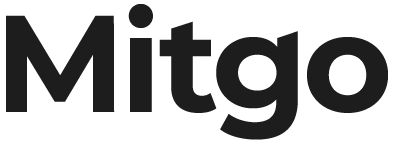All information and answers below are only recommendations and are based on the clarifications and letters from the Federal Antimonopoly Service, Roskomnadzor, and Federal Law No. 38-FZ "On advertising", dated March 13, 2006. If you have any questions, please refer to the current legislation and/or send requests with cases to the Federal Antimonopoly Service.
Learn more about the ad labeling law in How Admitad publishers need to respond to the advertisement marking law in Russia.
Below is a list of frequently asked questions. Click a question to jump to the answer:
- Are there any general ad marking/labeling requirements?
- What are the rules for labeling creatives of various formats?
- I use personal promo codes. How do I label my ads if I don't use affiliate links?
- I live in another country and pay taxes there. How do I provide the details?
- What information do you submit to the advertising data operator?
- How do I label creatives if several advertisers use the same creative?
- I have several companies/details. What tax/legal details do I provide in my profile/the form?
- What do I do if I withdraw funds to accounts of different companies?
- Do I have to mark each advertiser-related page if I run a cashback service?
- I use my own link-shortening tool. Do I have to add the token to a shortened link?
- To which link should I add the token: the one users click or the landing link?
- Where do I get advertiser information to launch campaigns with Yandex Direct?
- Do I have to send reports when I use Admitad Teleport?
- How do I know that I need to receive tokens again?
- Why do some advertisers not have a token?
- Is it possible to mark creatives for foreign advertisers?
- Is a product image considered a creative?
- Do I have to mark a banner if a link it contains leads to the advertiser card on my website rather than the advertiser website?
- I cooperate with foreign affiliate programs that allow traffic from Russia. Do I have to label my ads and report on them?
- How do I provide advertiser information when launching campaigns with Yandex Direct?
- Why can't I label creatives with some links for the AliExpress RU&CIS NEW program?
- Additional explanations from the Federal Antimonopoly Service
Are there any general ad marking/labeling requirements?
Yes. According to the Order of Roskomnadzor No. 191, dated November 30, 2022, online ads must contain special marks, namely:
- An identifier (a token). Read the rules for adding it.
- Advertisement marking and advertiser information. Read the rules for adding them.
Learn more in What are the rules for labeling creatives of various formats?
Rules for adding a token (an identifier)
| Ad contains a link |
Add the token (identifier) to the click link*. *A click link is a link that the creative (e.g., post or banner) contains and leads to the advertiser's website. |
| Ad doesn't contain a link |
Add the token (identifier) as the tag erid: xxxx:
|
Rules for adding the Advertisement marking and advertiser information
Example: Advertising. Daisy LLC. INN (TIN) 111222333
| "Advertisement" marking |
1. The color, font, and size of the "Advertisement" marking must be readable (contrast and not too small). It's not recommended to place the "Advertisement" marking in hidden menus and tabs (e.g., kebab-menu). Such practice doesn't meet the legal requirements. |
| Advertiser information |
You have to add the following:
In case of creatives for AliExpress, either AliExpress itself or a merchant on this platform may serve as an advertiser. It depends on the product that is being advertised. It is important to indicate the appropriate advertiser when labeling ads. |
What are the rules for labeling creatives of various formats? For example, a post with an image, a post without an image, a post with a link, a post without a link, etc.
Click on any format to see a detailed description of the related rules.
Formats with links:
- Text, image, and link (text-graphic block)
- Image and link with no text (graphic block)
- Text and link with no image (text block)
- Clip and link
Formats without links:
Text, image, and link
1. The following elements must be at the end of the text OR in the image:
- "Advertisement" marking
- Advertiser information (company name, self-employed individual's name, individual's name, and TIN (INN))
Example: Advertisement. Daisy LLC. INN (TIN) 111222333
2. The click link should contain the token (identifier) in the following format:erid=xxxx.
Example: https://www.site.ru/?erid=xxxx
Image and link with no text
1. The image should contain the following:
- "Advertisement" marking
- Advertiser information (company name, self-employed individual's name, individual's name, and TIN (INN))
Example: Advertisement. Daisy LLC. INN (TIN) 111222333
2. The click link should contain the token (identifier) in the following format:erid=xxxx.
Example: https://www.site.ru/?erid=xxxx
-
The example doesn't have a link, but make sure the link in your placement contains the token.

Text and link with no image
1. The click link should contain the token (identifier) in the following format:erid=xxxx.
Example: https://www.site.ru/?erid=xxxx
2. The following elements should be placed at the end of the text:
- "Advertisement" marking
- Advertiser information (company name, self-employed individual's name, individual's name, and TIN (INN))
Example: Advertisement. Daisy LLC. INN (TIN) 111222333
Clip and link
1. The following elements should be placed on top of the clip:
- "Advertisement" marking
- Advertiser information (company name, self-employed individual's name, individual's name, and TIN (INN))
- The token (identifier) in the erid=xxxx format.
Example: Advertisement. Daisy LLC. INN (TIN) 111222333
2. The click link should contain the token (identifier) in the following format:erid=xxxx.
Example: https://www.site.ru/?erid=xxxx
Text and image with no link
1. The token (identifier) in the Erid: xxxx format should be placed at the beginning of the text.
2. The following elements should be at the end of the text OR in the image:
- "Advertisement" marking
- Advertiser information (company name, self-employed individual's name, individual's name, and TIN (INN))
Example: Advertisement. Daisy LLC. INN (TIN) 111222333
Image with no link, no text
1. The token (identifier) in the Erid: xxxx format should be in the image.
2. The image should contain the following:
- "Advertisement" marking
- Advertiser information (company name, self-employed individual's name, individual's name, and TIN (INN))
Example: Advertisement. Daisy LLC. INN (TIN) 111222333
Texts with no link, no image
1. The token (identifier) in the Erid: xxxx format should be placed at the beginning of the text.
2. The following elements should be placed at the end of the text:
- "Advertisement" marking
- Advertiser information (company name, self-employed name, individual name, and TIN (INN))
Example: Advertisement. Daisy LLC. INN (TIN) 111222333
Admitad has a Tokens and creatives tool that allows you to receive unique tokens (identifiers) for your creatives regardless of their placement format. Learn more about the tool
I use personal promo codes. How do I label my ads if I don't use affiliate links?
Admitad has a Tokens and creatives tool that allows publishers to receive tokens (identifiers) and mark creatives, even if they don't include an affiliate link. Learn more about the tool
I live in another country and pay taxes there. How do I provide the details?
It doesn't matter which country you are a resident of.
If the advertisement you publish appears in Russia and/or is intended for Russian users, it must comply with the Federal Law "On advertising" and thus contain marking.
Moreover, you have to report on such ads to the UROA (Unified Online Advertising Register).
In particular, to comply with the reporting requirements, you must fill out the form and provide your tax and legal details in your account: https://store.admitad.com/ru/webmaster/ord/.
Form-filling guide for publishers who aren't Russian residents
What information do you submit to the advertising data operator?
To report on the entire advertising chain, including publishers and ad spaces, the following information is submitted to the advertising data operator and then to the UROA:
1. Advertising chain counterparty information:
- Entity type
- TIN (INN): for Russian residents only
- Company name (for legal entities) or full name (for individuals)
- Tax Number/VAT Number (for non-residents of Russia only)
- Phone number (for non-residents of Russia only)
2. Certificate of advertising services rendered:
- Information on the agreement between the publisher and Admitad
- Roles of counterparties (customer/contractor)
- Certificate creation date
- The start date of the period for which the certificate is sent
- The end date of the period for which the certificate is sent
- Cost of advertising services rendered (amount of the reward Admitad paid to the publisher).
3. Statistics related to the certificate:
- Creative identifier (related to the token)
- Ad space info (type, name, link)
- Number of creative impressions for the specified period
- Expected and actual start date of the placement
- Expected and actual end date of the placement (according to the certificate)
- Cost of advertising services rendered (amount of the reward Admitad paid to the publisher)
- Cost per unit of services rendered.
How do I label creatives if several advertisers use the same creative?
According to the Federal Antimonopoly Service, if one ad contains several advertised objects related to various advertisers, a creative should be registered for each advertiser separately so you get a token (identifier) for each.
Admitad has a Tokens and creatives tool that allows you to receive unique tokens (identifiers) for your creatives regardless of their placement format. Learn more about the tool
I have several companies/details. What tax/legal details do I provide in my profile/the form? What do I do if I withdraw funds to accounts of different companies?
When reporting to the UROA through an advertising data operator, Admitad doesn't provide information on where a publisher withdraws their funds.
But, after the cooperation process is established, the Federal Tax Service will get access to the UROA and will be able to take this information into account when verifying the reports received.
You should specify in your profile/in the form the TIN (INN) to which you withdraw the funds for the advertising services you render.
Do I have to mark each advertiser-related page if I run a cashback service?
We sent an official request to the Federal Antimonopoly Service on this question and received this file with a detailed answer.
Below are the key provisions:
- The "Advertisement" label is placed on the advertising material.
- A webpage is an independent component of a website that contains information (text, graphics, audio and video files).
A webpage itself is not an advertising material, but it can contain advertising materials.
- Homepages, which contain information on advertisers, only contain a logo. And since a logo is not an advertising material, it's not required to add any labels to it.
Labeling includes adding the following:- "Advertisement" marking
- Advertiser information (company name or self-employed name, individual name, and TIN (INN))
- The token (identifier) in the erid=xxxx format.
I use my own link-shortening tool. Do I have to add the token to a shortened link?
Yes, you do.
Admitad has a Tokens and creatives tool that allows you to receive unique tokens (identifiers) for your creatives regardless of their placement format. Learn more about the tool
Please note. The token in the link should be placed through the erid=xxxx parameter (otherwise, it might be invisible to the robots used by regulators).
Example: https://www.site.ru/?erid=xxxx, where хххх is the token (identifier).
How to correctly add a token to a shortened link
To which link should I add the token: the one users click or the landing link?
The erid=xxxx parameter, where xxxx is the token (identifier), should be added to the click link (see explanations of Roskomnadzor, page 58).
Where do I get advertiser information to launch campaigns with Yandex Direct?
You can find the company name and advertiser TIN (INN) on the program page in the About advertiser section.
You can receive agreement information through support or from your manager.
Do I have to send reports when I use Admitad Teleport?
Admitad Teleport allows sending reports provided that you use tokens (identifiers) received in Admitad.
Please note. The law prescribes that the click link must contain a token (identifier). Make sure the token is visible (when you hover over the link) in the links used in your ad space.
How do I know that I need to receive tokens again?
If any changes affect marking and creatives, the advertiser announces them in the newsletter.
Make sure notifications of the "Affiliate programs" category are enabled in your account (see Notifications). Keep an eye on the messages that arrive at the selected email address.
Why do some advertisers not have a token?
Token (identifier) assignment is unavailable to some advertisers due to technical limitations and limitations on the advertiser's side.
Possible solutions to this situation are being developed. This answer will be updated once we have any further information.
Is it possible to mark creatives for foreign advertisers?
You can find the list of all advertisers to which marking is available in the Admitad Store catalog. Use the With marked ads filter.
Is a product image considered a creative?
Yes, if this information targets the general public and aims to draw attention to the object of advertising, build and maintain interest in it, and promote it in the market.
Do I have to mark a banner if a link it contains leads to the advertiser card on my website rather than the advertiser website?
This is a tricky question. If the banner is of an advertising nature, assigning a token (identifier) is mandatory.
If the banner is informational and doesn't feature any specific object, it's optional.
I cooperate with foreign affiliate programs that allow traffic from Russia. Do I have to label my ads and report on them?
If the ad is published in Russia and intended for Russian consumers, assigning a token (identifier) is mandatory.
How do I provide advertiser information when launching campaigns with Yandex Direct?
1. In End advertiser attributes provide information on the advertiser who ordered advertising.
-
Company type. Usually, it's a legal entity.
You can find the advertiser's exact entity type at https://egrul.nalog.ru/index.html by the advertiser's TIN (INN).
-
TIN (INN). Specify the tax number of the advertiser's company. You can find it on the Admitad affiliate program's page in About advertiser.
- OKVED. Enter the advertiser's OKVED code. You can find it at https://egrul.nalog.ru/index.html.
OKVED codes can contain 3 to 6 digits with periods as dividers Format examples: 00.0, 00.00, 00.00.0, 00.00.00.
- Name. Specify the name of the advertiser's company. You can find it on the Admitad affiliate program's page in About advertiser.
2. Disable the I am the end advertiser option.
4. To fill out the End advertiser counterparty attributes and End advertiser agreement attributes, learn from support or your manager how the advertiser cooperates with Admitad: directly or through an intermediary.
| Advertiser cooperates with Admitad directly |
Advertiser cooperates with Admitad through an intermediary |
|
|
In End advertiser counterparty attributes |
Specify Admitad company details | Specify intermediary company details (you need to request them) |
|
In End advertiser agreement attributes |
Specify the details of the agreement between Admitad and the advertiser:
|
Specify the details of the agreement between the intermediary and the advertiser:
|
-
- Company type — legal entity (Russia).
- TIN (INN) — 7722719975.
- Name — Sparta LLC.
-
- Agreement type. Select Service agreement.
- Subject. Select Advertising agreement.
- Agreement value. Leave this field empty (or specify 0).
-
Including VAT. Don't flag this box.
How to label creatives for AliExpress?
To do so, use the Tokens and creatives tool. It helps to get tokens and learn information about the company which serves as an advertiser for all specific links on the AliExpress webiste.
- Go to the tool and register your ad placement as a creative. How to do that
- You will get a token and be able to copy the detailed info on the advertiser. Learn more
Additional explanations from the Federal Antimonopoly Service
1. PARTNER INFORMATION:
Partner information published in the website's special section, including company logos, website links, and categories (general, long-standing, etc.), without accentuating any specific partner, should not be considered advertising.
2. MONO WEBSITES:
A website devoted to one deal or one product should not be regarded as advertising. But if a webpage only consists of a creative (e.g., a banner) and displays no product information, such a website could be considered advertising.
3. PRIVATE GROUPS AND APPS:
Information published in a private group or app can be recognized as advertising, even if registration in such a group or app is required.
Targeting the general public means this information can be of interest to anyone.
4. MARKETPLACES AND SEARCH RESULTS:
In most cases, product cards, filters, selections, and shelves aren't recognized as advertising, even if some cards are designed otherwise or if products belong to special categories (e.g., New, Hit, etc.)
Promoting in search results is a technical service, not advertising.
5. INFORMATION ON YOUR OWN RESOURCE:
According to the general rule, information published on the company's own resources (website, social media profile, channel) should not be recognized as advertising.
The purpose of such placements is to announce and describe the company's activities, products, new items, deals, etc.
6. SELF-ADVERTISING:
There's no such term as "self-advertising" in the law, and it's not expected any time soon.
If information complies with the Federal Law "On advertising", it should be recognized as advertising, no matter where it's published: on one's own or third-party resources.
NATIVE ADVERTISING:
This term contradicts itself. It's not planned to introduce it. The law only has "advertising" and "organic integration" terms.
8. ADVERTISING ON BANNED SOCIAL MEDIA:
In terms of publishing ads on banned social media, two approaches are currently being used:
1. The Federal Antimonopoly Service mentioned that the banned social media are not currently subject to the Federal Law "On advertising" since such ads are not considered published in Russia. Therefore, marking such ads—i.e., assigning tokens (identifiers)—is not required.
2. At the session held on August 31, 2023, Roskomnadzor expressed a different position, stating that ads published on banned social media MUST be marked, i.e., tokens (identifiers) should be assigned to them. Roskomnadzor WILL monitor and examine such creatives.










